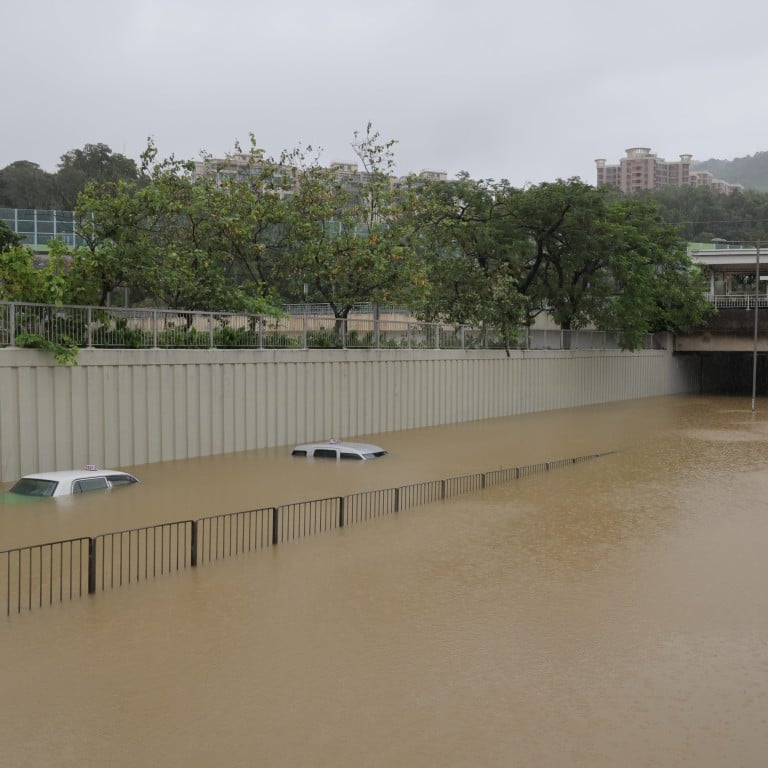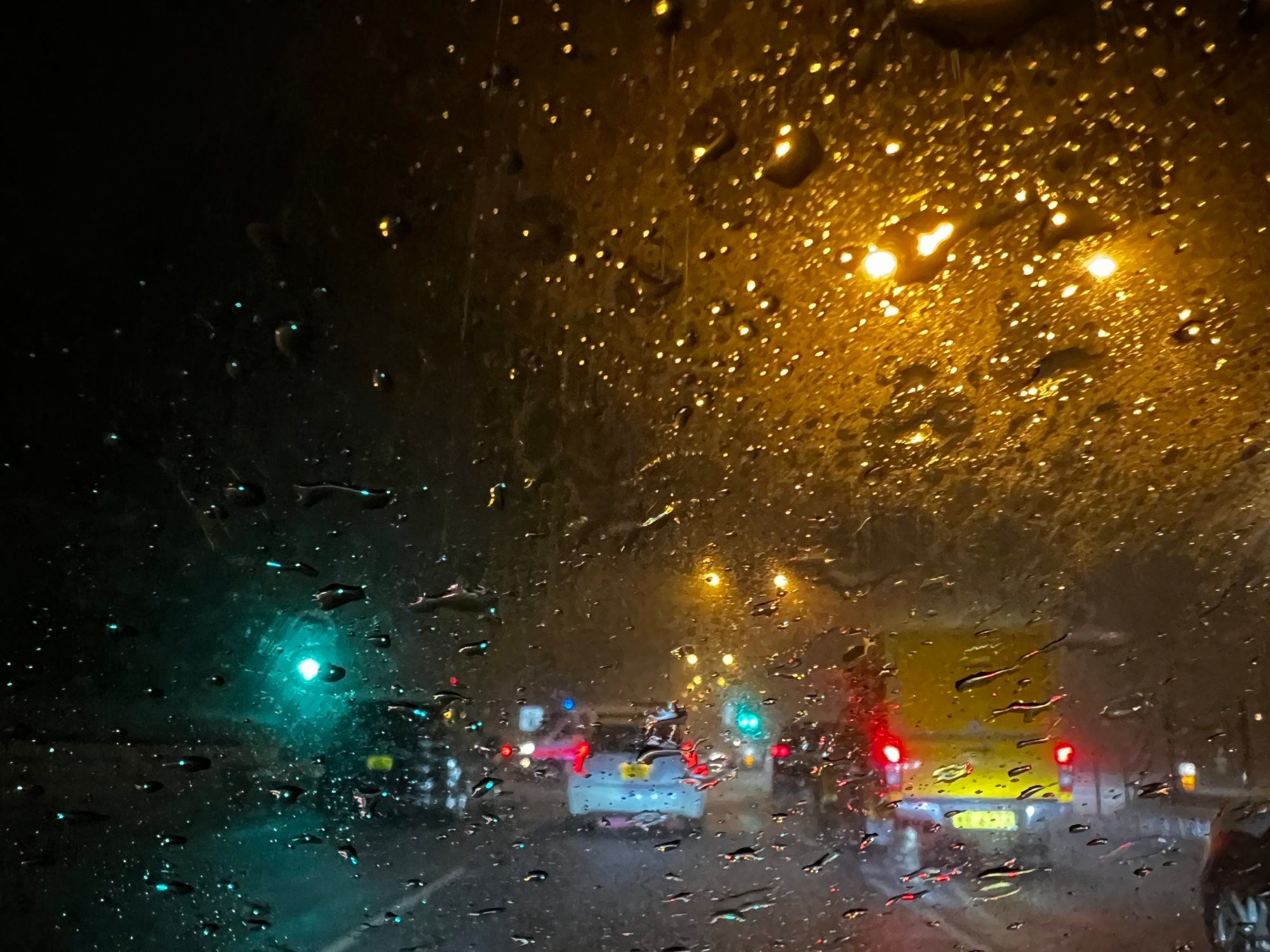
Hong Kong floods: Post editor shares what it’s like being caught on the road in worst downpour in decades to hit city
- Hong Kong desk editor Denise Tsang was trapped in traffic for 2½ hours before making a detour and spending sleepless night at hotel
- She, like many others, did not expect weather to deteriorate so fast following first amber rainstorm warning
South China Morning Post news editor Denise Tsang was among commuters caught in citywide jams overnight on Thursday as Hong Kong succumbed to floods after record rainfall turned roads into mini rivers. She shares details of the chaos she encountered.
It would normally take 30 minutes to drive home from Tsim Sha Tsui to Tai Po in the New Territories on a non-eventful evening, but little did I know when I set off on Thursday night that I would be stuck on the road for 2½ hours and still fail to make it home by daybreak.
By the time I left the dinner at 10pm as my husband drove by to pick me up, the rain warning had been upgraded to a red alert, the second on a three-level tier.

The rain worsened as we drove along Lion Rock Tunnel from Kowloon through Sha Tin, towards Tai Po. Visibility was very low and our windscreen wipers were not clearing fast enough the veil of water besieging the glass. I feared that if I pushed the wipers to maximum speed, they would snap off, fuelling my rising anxiety.
Our drive started to feel dangerous. Many motorists turned on their hazard lights to warn others to keep a distance, but the back splashes from vehicles as they travelled over fast-flooding roads made it hard to navigate.
The usual 15-minute ride on Tolo Harbour Highway started to feel like a never-ending odyssey, as we kept our eyes peeled on surrounding traffic. Much like others, we reduced our speed by nearly half to about 50km/h (31mph).
Hong Kong wakes to submerged roads, landslides amid black rainstorm alert
By 10.40pm, home seemed within reach as we entered the final 8km (5 miles) stretch on the Tai Mei Tuk-bound side of Ting Kok Road. But something seemed amiss with traffic ahead. Following the cars in front, we stopped and waited at the junction of Dai Kwai Street of the Tai Po industrial park.
Are Hong Kong’s typhoons getting stronger? Forecaster points to new patterns
At about 11pm, we received the Hong Kong Observatory’s alert of a black rainstorm warning, the highest level. We had not moved a single inch in traffic.
I searched frantically on the official Hong Kong Mobility app, as well as radio apps to find out what was going on, but in vain. The only information I got was from friends living along Ting Kok Road, who indicated a minibus on route 20C between Tai Mei Tuk and Tai Po Market station had broken down in a flash flood in the middle of the road, and the service had been suspended.
The rainstorm was so unexpected and came so fast. It was unlike a week ago when Super Typhoon Saola hit, with Hong Kong well-prepared and disruptions and damage to roads relatively milder than feared.
While stuck in the traffic jam, I saw passengers get off from a double-decker in the middle of a street and several fire engines with sirens on, driving in the opposite direction on Ting Kok Road.
We waited nearly two hours in the same spot. Some drivers got impatient, getting out of their cars to survey the situation. It was cool and comfortable with the air conditioner on in our car, but the battery of our electric vehicle was running low with only 40 per cent left, heightening the sense of uneasiness.
What’s wrong with Hong Kong’s weather? The effects of climate change
Perhaps because of my profession, multiple scenarios started flashing through my mind. What if our car battery ran out? What if the stream forming on the roadside intensified into a full-on flood and damaged our newly bought vehicle? I lost my last car seven years ago in a flash flood on the same road.
Amid my mounting anxiety and after discussing with my husband, I quickly booked a hotel in Sha Tin near Chinese University MTR station, at HK$1,500 (US$191) a night, breakfast and overnight parking included. This would be our first-ever staycation, but it felt more like we were running from a disaster.
Hong Kong under black rain alert, extreme weather to last till 6pm at least
After some drama trying to make a U-turn back onto Tolo Highway, we got to the hotel past 1am. I was astonished to find we were not the first guests in line to check in – there were about five other couples with no packed belongings and cars parked outside. Obviously, we were all in the same boat.
Needless to say, I did not sleep well the whole night.
I woke up at 9am, and upon drawing open the curtains, was stunned by a bursting waterfall on a hillside along Tai Po Road. The muddy water was gushing as if from a burst pipe. A few fire engines and police cars were on standby.
I am about to check out of the hotel and will head home, with uncertainty about the state of our house, especially our other electric vehicle parked outside our home where a flash flood had swallowed many cars seven years ago.

